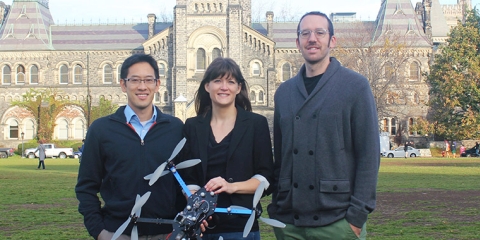
Sirens wail as responders race to apply a defibrillator shock to patients in cardiac arrest but often, they’re too late: Only 10% of people survive. But that could change, says industrial engineer Timothy Chan, a professor at the University of Toronto.
Drones that look like miniature helicopters, strategically placed at EMS, fire and police agencies, could beat ambulances to the scene by many minutes and, in some cases, cut response times in half according to new computer models.
Full article at: EMS World, Feb. 1, 2017
Other articles in the media on:
- Mar. 16, 2017: Drones could speed deployment of emergency defibrillators: Canadian study (Globe and Mail)
- Nov. 14, 2016: Drone-delivered AEDs offer novel approach to saving lives at home (U of T Engineering News)
- Nov. 14, 2016: Drone Delivery Could Shave Crucial Minutes off the Median Ambulance Response Times in Both Rural and Urban Regions (Sudden Cardiac Arrest Foundation)
- Nov. 14, 2016: U of T Researchers Explore UAV-Delivered Automatic External Defibrillators (Unmanned Aerial Online)
- Nov. 15, 2016: Defibrillator-equipped drones could be 1st on scene in cardiac arrest (CBC News; The National)
- Nov. 15, 2016: The newest weapon in the fight against cardiac arrest: drones with defibrillators (The Loop)
- Nov. 17, 2016: Drone Delivery Could Shave Crucial Minutes off the Median Ambulance Response Times in Rural, Urban Regions (EMS World)
- Nov. 18, 2016: Defibrillator-Equipped Drone the Next ‘Shocking’ Thing (DroneSec)
- Nov. 19, 2016: Live Saving Medical Devices Could Soon Be Delivered By Drone to Heart Attack Victims (Futurism)
- Nov. 24, 2016: U of T researchers study network to send drones to those in cardiac arrest (Toronto Star)
